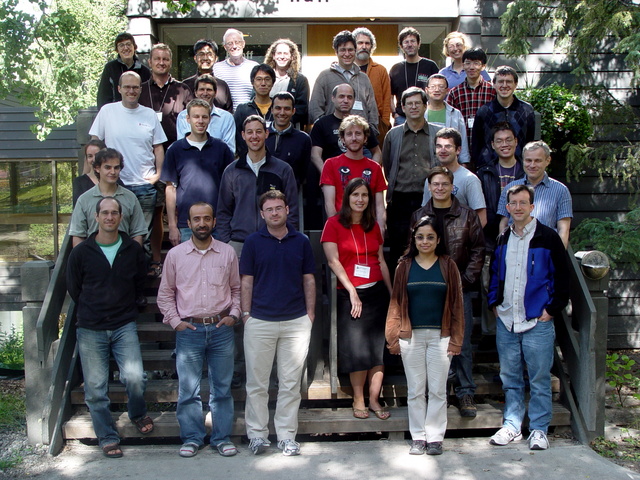The stable trace formula, automorphic forms, and Galois representations (08ss045)
Organizers
James Arthur (University of Toronto)
Michael Harris (Universite de Paris 7)
Eric Urban (Institut Mathématique de Jussieu)
Vinayak Vatsal (University of British Columbia)
Description
most striking success of the Langlands program has been its use by Andrew Wiles in his proof of Fermat's Last Theorem, completed in joint work with Richard Taylor.
The aim of the workshop that is to be held at the Banff International Research Station on August 10 - 17, 2008 is to present recent progress, largely due to James Arthur, in Canada, and to Gerard Laumon, Ngo Bao-Chau, Jean-Loup Waldspurger, and Jean-Pierre Labesse, in France, toward the development of a stable trace formula, a crucial tool for confirming the predictions of the Langlands program. We especially hope to report on applications to number theory of the sort developed by Wiles in the course of his work on Fermat's Last Theorem.
The Banff International Research Station for Mathematical Innovation and Discovery (BIRS) is a collaborative Canada-US-Mexico venture that provides an environment for creative interaction as well as the exchange of ideas, knowledge, and methods within the Mathematical Sciences, with related disciplines and with industry. The research station is located at The Banff Centre in Alberta and is supported by Canada's Natural Science and Engineering Research Council (NSERC), the US National Science Foundation (NSF), Alberta's Advanced Education and Technology, and Mexico's Consejo Nacional de Ciencia y Tecnología (CONACYT).






